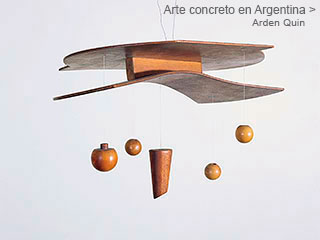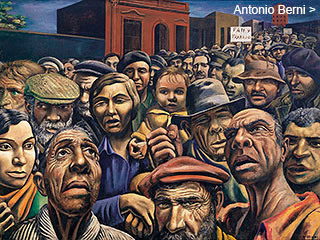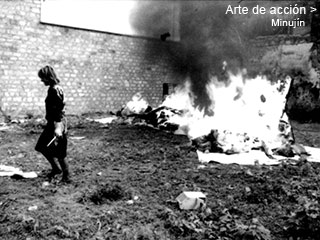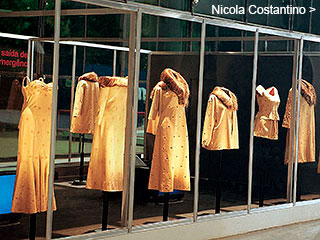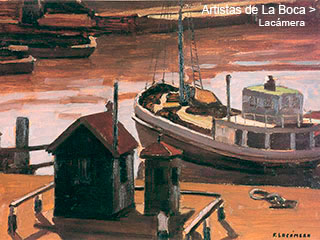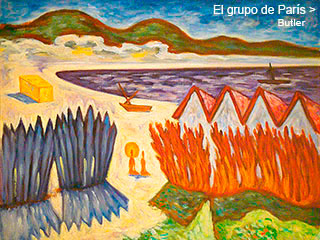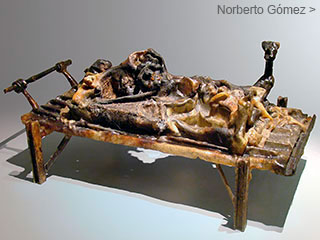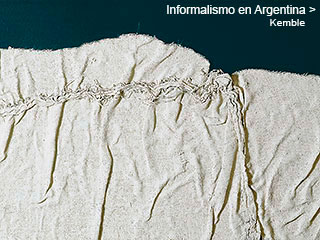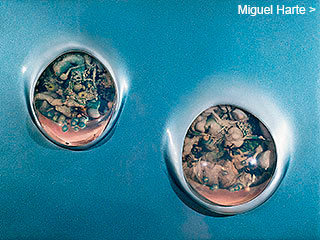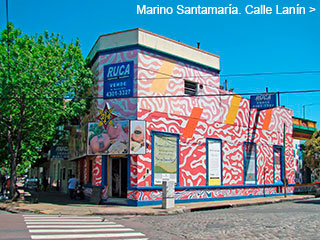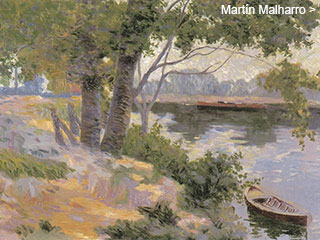Menú
Algunos dossiers
Norberto
Gómez
Gómez
by
Adriana Lauria and Enrique Llambías
March 2006
March 2006
This dossier covers forty years of Norberto Gómez’s work, from his minimalist constructions of 1966 and 1967 to the anti-monuments he produced in polyester and bronze in the nineties. In between, his series of “guts”, organic remains, weapons and “plasters” punctuate a long career that has enriched the Argentine art scene.
2000
his use of a material like bronze, with its strong associations with academic sculpture. Yet his pieces are, precisely, parodies of the academic technique, and satirise the solemnity of objects “cast in bronze” and “immortalised in a monument”.
A critical meditation on memory is inherent in Gómez’s work, and now he calls into question the validity of “heroism”, casting an ironic, corrosive, humorous glance at the culture of remembrance, while taking note of the “personages” that should be considered by a less idealistic history – a history more aware of recurring chaos. In the exhibition catalogue, Marcelo Pacheco writes that these works are:
Objects that look back at us. Fragments in search of a place. Ambiguities in the form of columns, stairs, towers and bridges. Spaces and mysteries halfway between the bizarre and the absurd, madness and scenography. (...) Sets and stage machinery, absurd constructions that open up an awkward space (due to their roughness and similarity). A rhetoric and a syntax of the monumental that Gómez has dealt with since the 1970s in ossuaries and sites, but also in the gothic plasters of the ‘80s and the ritual artefacts made over the past 15 years. Monuments which invert the surfaces of the heroic monuments with which Argentina has constructed a symbolic nation and a fictive community since the 19th century. (...) These objects look at us, and it is not in their representation or absurd figuration that they are disquieting, but in what is absent
more


